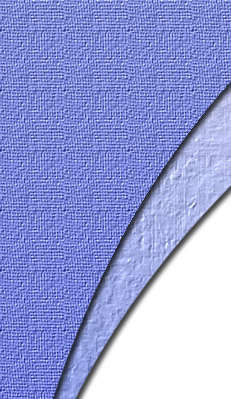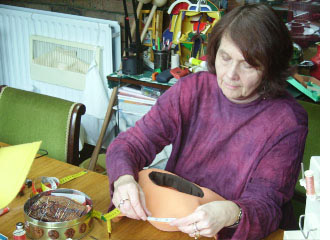










![]()
![]()
I came to hat making late and somewhat by chance divine. For some 15 years I had worked as a ceramic artist. To give myself a rest, I diverted to academic study, initially for one year. The world of ideas became overwhelmingly seductive and I went on to do a degree in Art History with History followed by an MA in Culture and Communication. An itch to create something with my hands reasserted itself, but not the wish to go back to ceramics with its attendant physically arduous work.
An advert offering tuition in couture millinery tickled my fancy but it took months for a vaguely intriguing idea to turn into a positive step. I contacted Rose Cory, a highly respected professional (milliner to the late Queen Mother) and gifted teacher, admitting that I had never made a hat in my life. Her response: come along and see how you get on. I had landed in the right place at the right time and started an informal kind of apprenticeship. My interest in the links between fashion and identity, my love of colour and textiles and my fascination with sculptural shapes can all be explored through headdress in its manifold guises.
![]()
Fashions change. Hats very nearly toppled off our heads during the 1960’s. Bouffant hairdos were piled high akin to the 18thc wedding-cake confections. Wigs and hair extensions became commonplace. Image and identity were located in dressed hair and hair-dressers largely replaced milliners.

 Hats and headgear managed to hang on in Haute Couture and for formal occasions. Now, a revival of interest and skills is underfoot. Hairstyles have reverted to much simpler cuts. We are exhorted to cover up against sun as well as cold. Babies and youngsters are growing up with hats and caps on their heads. Headgear is well on the way to becoming an identity badge again. A noticeable influx of foreign mass-produced, mostly simple and affordable head-coverings testifies to this renewed interest. There is also a place for preserving the know-how, quality production and inventiveness of our native traditions.
Hats and headgear managed to hang on in Haute Couture and for formal occasions. Now, a revival of interest and skills is underfoot. Hairstyles have reverted to much simpler cuts. We are exhorted to cover up against sun as well as cold. Babies and youngsters are growing up with hats and caps on their heads. Headgear is well on the way to becoming an identity badge again. A noticeable influx of foreign mass-produced, mostly simple and affordable head-coverings testifies to this renewed interest. There is also a place for preserving the know-how, quality production and inventiveness of our native traditions.
By analogy, who would have anticipated a veritable explosion recently of clicking knitting-needles around the country and a quest for retrieving old skills, especially since it is possible to buy perfectly serviceable ready-made woollies for two-a-penny almost anywhere. Hatters, mad or otherwise, take heart.
Hats in very many different styles can provide a highly visible statement of individuality, of each and everyone’s uniqueness in this age of homogenised, mass-produced, globalised and commercialised identity.
Dare to stick out and stand up for the notion of being special, for the idea of uniqueness, for the fun of fashion play.

